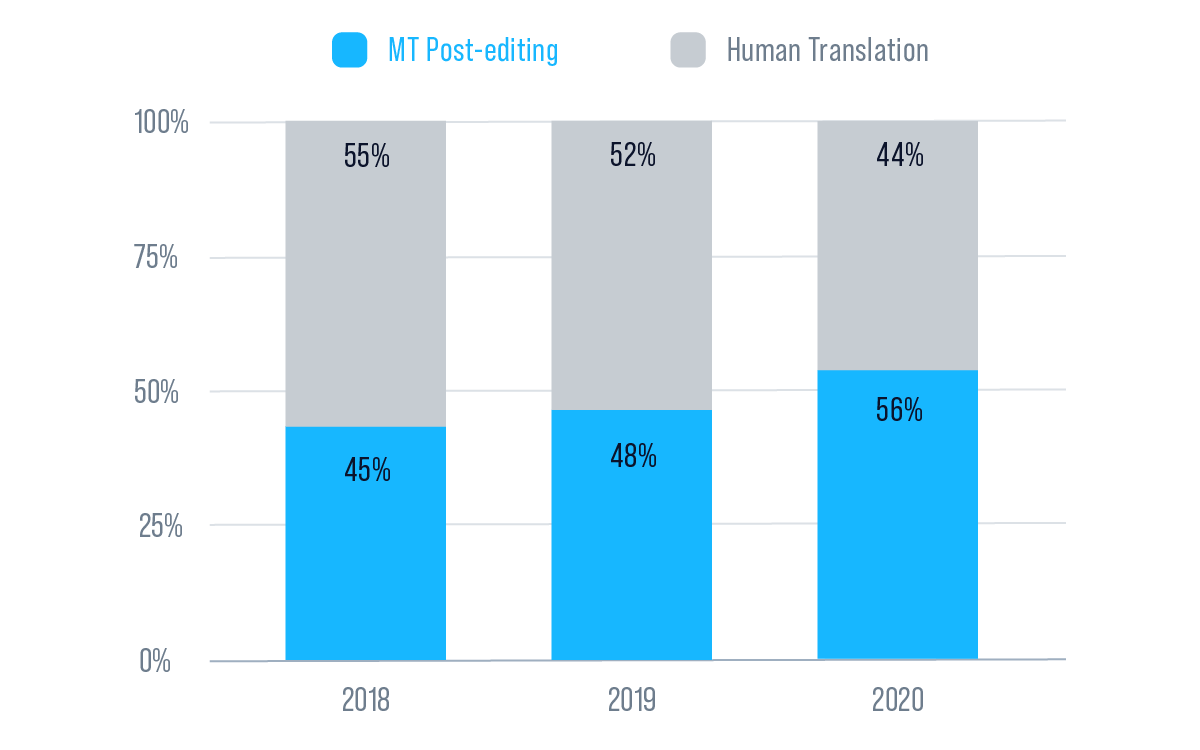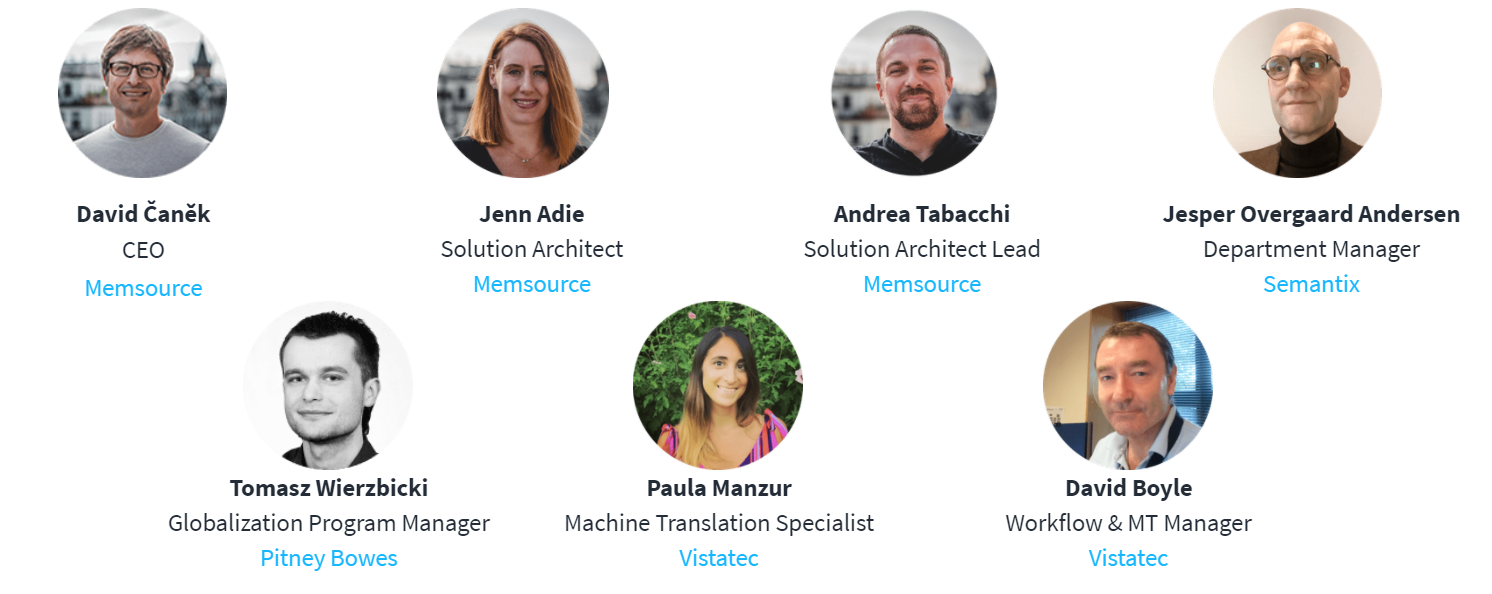
Blog
Machine Translation Report
What is the optimal MT Engine for you? Find out in the latest MT Report by Memsource.

To launch our new Machine Translation Workshop Series, we hosted a kick-off event that was packed with insights into machine translation, from implementation to adoption.
What is the Machine Translation Workshop Series?
According to Memsource data, in 2020 machine translation post-editing has become the dominant translation method. And there is no doubt that machine translation (MT) will play an increasingly important role in translation. But companies are still facing challenges and in some cases resisting MT.

Memsource has decided to tackle these challenges head on by creating a series of hands-on workshops to help businesses and localization professionals learn more about how the latest developments in MT can be leveraged in translation workflows. The series will consist of six workshops that will focus on solving the problems and providing expert advice on machine translation. The kick-off event aimed to not only explore the challenges of machine translation but also crowdsource topics and themes for the upcoming events. We want the series to spotlight real issues and questions that people have about machine translation.
Be the first to know about the next episode in the series.
To introduce the trials and tribulations of MT and to find out which challenges are most prevalent, we invited a panel of machine translation users ranging from newcomers to veterans. Panelists included:
- Jesper Overgaard Andersen, Department Manager at Semantix
- Tomasz Wierzbicki, Globalization Program Manager at Pitney Bowes
- Paula Manzur, Machine Translation Specialist at Vistatec
- David Boyle, Workflow & MT Manager at Vistatec
As well as Memsource’s own Solution Architect, Jenn Adie, who runs the workshop series, and Solution Architect Lead and resident Memsource machine translation expert Andrea Tabacchi.

The pains and gains of machine translation
The machine translation newbie
Pitney Bowes is new to the world of machine translation, starting several months ago. According to Tomasz Wierzbicki, the decision to implement MT came down to speed, cost, and quality. Their strategy takes two approaches based on the varied translation needs within the company. The first approach is using raw machine translation (machine translation output without human intervention) for teams that just need to communicate the gist, for example for categorizing and prioritizing chatbot support tickets. The second approach is machine translation post-editing (machine translation output is reviewed by a human translator) for teams that have higher quality expectations for customer-facing content.
The one of the challenges for Pitney Bowes is fine tuning the content and cleaning the data to ensure high-quality machine translation output for their custom trained engines because “if you put rubbish in, you get rubbish out”, said Tomasz. Their ultimate goal is now to improve machine translation quality with reduced effort and costs.
The seasoned machine translation users
Language service providers Vistatec and Semantix have been leveraging machine translation for many years. Vistatec’s first big machine translation project was back in 2015. But even for veterans, there are still many challenges. Some technical challenges that Vistatec faces are how to implement MT into each TMS, whether the TMSs have built-in connectors, or whether integrations need to be built. One of the ongoing challenges is education and training for those involved in the machine translation workflow and aligning expectations between customers and post-editors. Vistatec wants machine translation to be a normal and seamless part of the workflow .
“Machine translation has disrupted us but you have to adapt or die.” - David Boyle
Paula Manzur has noticed a huge improvement in machine translation quality over the years. From having to completely rework the unusable MT output to rarely coming across an MT segment that is not useful. She notes that in the past, customers weren’t asking for machine translation. But now they’re seeking advice on how to implement it, not just because of the faster turnaround time and reduced costs but also because they realised they potentially lose a lot of money if they choose not to localize something. According to a CSA Research report, “if a company chooses to not localize the buyer experience, they risk losing 40% or more of the total addressable market.”
“MT opens the window to the market that is not being addressed.” - Paula Manzur
For Semantix, machine translation is a staple and was incorporated into their translation workflow back in 2014. The biggest challenge in the rollout of MT was recasting their translators. Transforming them into post-editors “presented a lot of challenges: negative bias, translator pride, and also being able to accept pre-translated content.”
Sematix took a more pragmatic approach to proofreading and revision. They trained their in-house linguists to stop gold-plating MT output and rather correct what is strictly necessary, refraining from incorporating their own preferences. This turned out to be a vital element in facilitating the adoption of the machine translation setup and recasting the team as “efficient editors of automated content.”
Full machine translation adoption has resulted in efficiency gains in both quality and throughput, and has helped Jesper’s team become more inspired and better proofreaders and translators.
“MT has disrupted the language industry in a really good way.” - Jesper Overgaard Andersen
What’s Next?
The main goal of the kick-off event was for participants to brainstorm and discuss pressing challenges their businesses are facing. In the following workshops, we’ll tackle these challenges together, starting with Budgeting and Financials in MT Enabled Workflows. Future topics will include efficient machine translation post-editing, implementation best practices, measuring machine translation quality, and more. You’ll have the hands-on training you need, for free, to equip you to stay agile.



